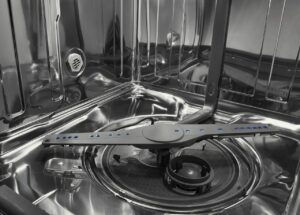Ways of Measuring Your Kitchen Refrigerator

Choosing the right fridge for your kitchen is an important decision affecting both functionality and aesthetics. In this regard, it is crucial to ensure that a refrigerator fits right into its intended space. This means that accurate measurements are important in order to avoid the inconvenience and expense of returning or exchanging an appliance which doesn’t fit. This guide will detail how to measure your kitchen space for a refrigerator, consider different types of refrigerators, and account for important aspects such as ventilation, door clearance and aesthetics.
Kinds of Fridges
Different fridges come in various sizes and have different area requirements thereby affecting their positioning inside the kitchen:
Top-Freezer Refrigerators: Classic budget-friendly option with freezer compartment on top; Standard depths need essential kitchen clearance.
Bottom-freezer refrigerators: The freezer on the bottom places fresh foods at eye level up top; They are deeper overall and need ample front clearance.
Side-by-Side Refrigerators: Slimmer width but deeper sizes; Flexible layout requiring little height space.
French Door Refrigerators: Bottom freezer with dual fresh food doors; It provides easy interior access in tight spaces that need more width.
Compact Refrigerators: These smaller units work excellently in tight spaces. They are perfect for use in garages, offices, bars, and other specialty locations.
Considering the various sizes and dimensions of configurations helps identify suitable shortlists of refrigerators early enough.
Step-by-Step Guide to Measuring for a Refrigerator
To get the correct measurements: follow these steps;
Step 1): Measure Available Space
Height:
Minimum space is provided from floor to ceiling on top.
Take into consideration any overhead moldings or light fixtures which may reduce height.
Width:
Total width allocated sideways.
Consider areas near cabinets or walls that prevent complete door swings.
Depth:
Maximum depth beyond cabinet face outwards permitting.
Ensure that it accounts for full door clearance swung open without hampering floors.
Step 2): Measure Refrigerator Itself
Exterior Dimensions:
Including doors and handles; total height, width, and depth should be noted down exactly as stated by the manufacturer.
Check what specifications have been listed regarding a specific model chosen.
Interior Dimensions:
Find out its storage capacities such as cubic feet inside fridge and freezer compartments based on food volumes kept inside it each time.
Step 3): Consider Ventilation and Clearance
Ventilation Space:
The unit tops and rear need clear airspace to prevent overheating (manufacturer’s rule).
Ideally, this should be two to three inches unless otherwise specified by the manufacturer or retailer.
Door Clearance:
Measure an arc larger than normal swing of the door allowing it to open without hitting any obstructions.
Step 4): Account for Delivery and Installation
Pathway to Kitchen:
Units should always fit through doorways and hallways without having to tilt or transport them in any other way.
To prevent unexpected surprises that may occur during delivery day, ensure there are no corner turns or stairs along the way.
Old Refrigerator Removal:
Swap the appliance like for like where the path in matches the path out.
Different areas have different recycling requirements when you responsibly upgrade your device.
Step 5): Evaluate Aesthetic Considerations
Kitchen Design:
The desired style and finish must match with the existing kitchen decor aesthetics as well as its workflow.
It is possible to either consider standalone installations or built-in cabinet integrated designs.
Functionality:
To enable practical food organization, make sure storage design and configuration is optimized appropriately.
Be certain of internal ease of access minus uncomfortable reaching hampering usage convenience.
Step 6): Make Adjustments as Necessary
Cabinet Modifications:
Ensure present cabinet spacing flexes if it is necessary so as to keep a smooth built in alignment.
Consider custom reconfiguration solutions instead that will perfectly suit your appliance constraints.
Utility Connections:
An easy set up by using electric ground modifications, installation could require water line plumbing additions.
Plan your unseen utility hookups based on installer insights.
Tips for Measuring and Installation.
Before you buy, make sure you double and triple check measurements to prevent trouble in returning it later.
If you are unsure what specifications work optimally for your intended kitchens and lifestyles, consult retailers, manufacturers, or third-party designers before buying. Collect multiple opinions to minimize missteps.
Go carefully through unit dimensions online along with technical specification sheets that must be confirmable with real paper alignments.
When evaluating utility needs over 5-10 years, consider potential lifestyle usage growth such as families expanding, to ensure adequate size lasts through life stages.
With accurate planning and measurements secured confidently upfront this seems like the perfect refrigerator delivering years of food freshness almost ready for final purchase consideration! Remember that taking careful considerations first eventually prevents headaches, so reference above critical steps undertaken when undertaking the exciting refrigerator upgrade process that ensures seamless installations done right first time without regrets.
Benefits of Getting a New Refrigerator
A new refrigerator is not only a kitchen upgrade – it is also an opportunity to improve your life by practically keeping food fresh through:
Superiority in Food Freshness: This includes new coldenship technology, insulation, and various temperature control systems that help keep the foodstuff fresh for a long time thus reducing wastage.
Greater Storage Capacity: The latest interior storage design improvements increase cubic space more vertically while reinvented organizational layouts expand volume for all your home’s food storage needs.
Energy Savings: By using advanced components that are geared towards sustainability, new refrigerators with EnergyStar rating use much less electricity which means reduced energy costs in the long run.
Smart Integration: From water dispensers and custom lighting to smart refrigerators that can be remotely watched through cameras and managed by voice commands to cool down – no other fridges offer this level of connectivity convenience.
Better Dependability: Improved manufacturing practices and better materials mean fewer breakdowns and repairs on new refrigerators when compared to their old counterparts, which are nearing expected life spans.
Purchasing a Refrigerator: What You Should Know
Consideration ought to be given to the other dimensions apart from size.
Size of the Family: To cater for different mouths and volumes of food needed for refrigeration in all chilled foods and frozen products, it is necessary to calculate capacity accurately.
Food Type Stored: Some things such as meats require colder freezing conditions while others such as dairy and produce can simply be kept cool – this is why it is essential to balance the proportionality of the compartments.
Frequency used: Households that keep on opening and closing their units daily perform better if they use glass doors with triple panes which reduce loss of air from outside for a longer period hence maintains constant inner temperature.
Climate Conditions: This includes ambient kitchen moisture, heat, garage installation scenarios affecting needs for external refrigerator airflow besides just room size plus specific local climate aspects.
Special Features Required: Defrosting modes, water dispensers built-in and wi-fi control among others are must-have ice makers versus mere nice-to-have features required based on your personal budget and practicality when it comes to your family’s consumption alone so you do not have to spend too much money because these features exist without any real usefulness specifically.
In Conclusion
Upgrade of refrigerators entails extensive advance planning, correct unit measurements and installation feasibility review prior to product choice as well as avoiding late surprises or problems. This reduces the burden for homeowners by fully understanding the key refrigeration styles (freezer on top, freezer on bottom, side-by-side) and carefully measuring their existing kitchens and specific units against clearance, pathways, ventilation, and cabinet limitations. The result will be a smooth transition into the purchase of models that blend with existing cabinetry and provide fresh-looking food preservation options! Be prepared to methodically go through each of the above important stages until it all comes together in your mind before buying appliances. Opening new refrigerator doors is one step closer to convenient meal times in future. Hence take measures twice to ensure your upgrades are perfectly fitted to your kitchen!
- Ways of Measuring Your Kitchen Refrigerator
- 8 types of ovens and their benefits
- Tips for Finding the Best Washing Machine for Your Home
- Tips for Less Is More for Wall Mounted Toilets
- Choosing Between a Plastic and a Stainless Steel Dishwasher Tub
- Steam Dryers: Efficient, Gentle, and Wrinkle-Free Laundry Solution
- Benefits of a Smart Washing Machine
- Beverage Stations: Elevating Your Kitchen with the Latest Trend
- New Ways to Design Your Kitchen in 2024
- Should You Choose a Column Refrigerator?






